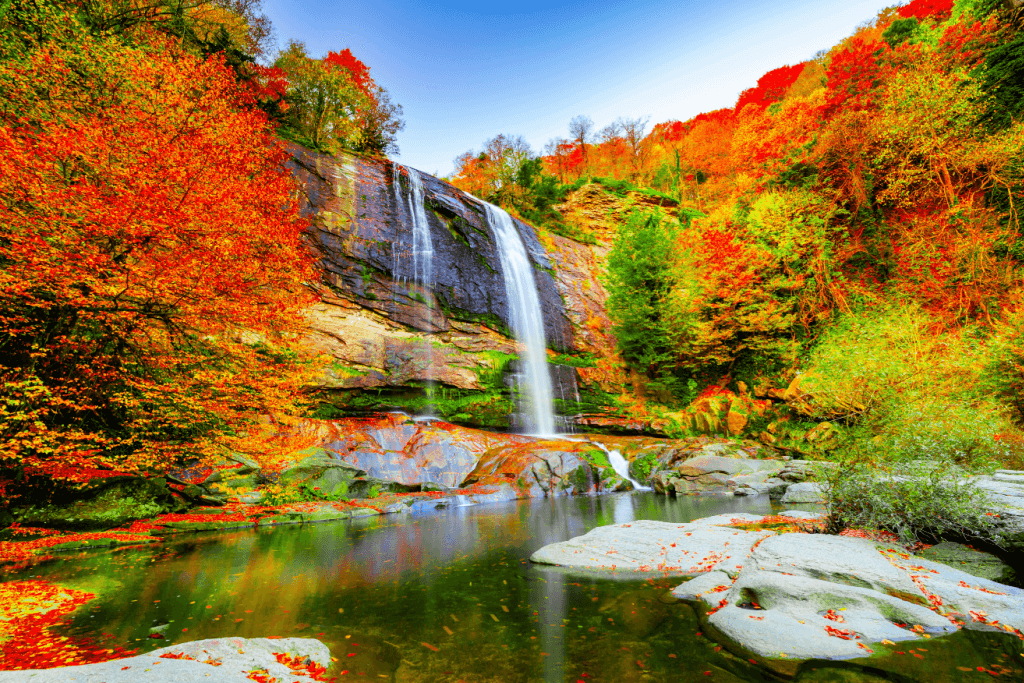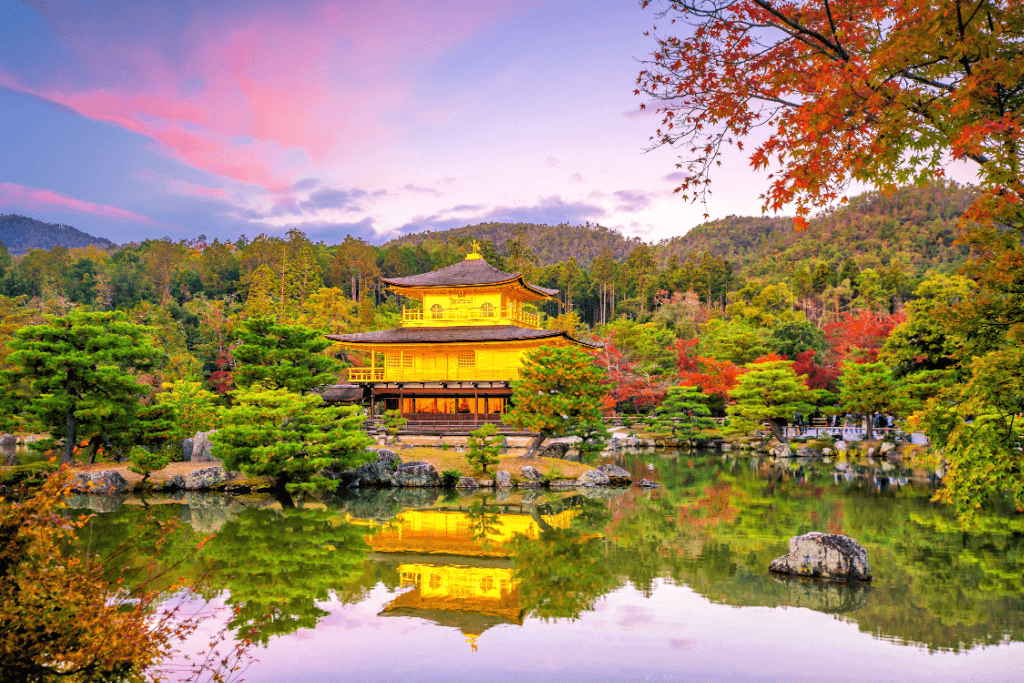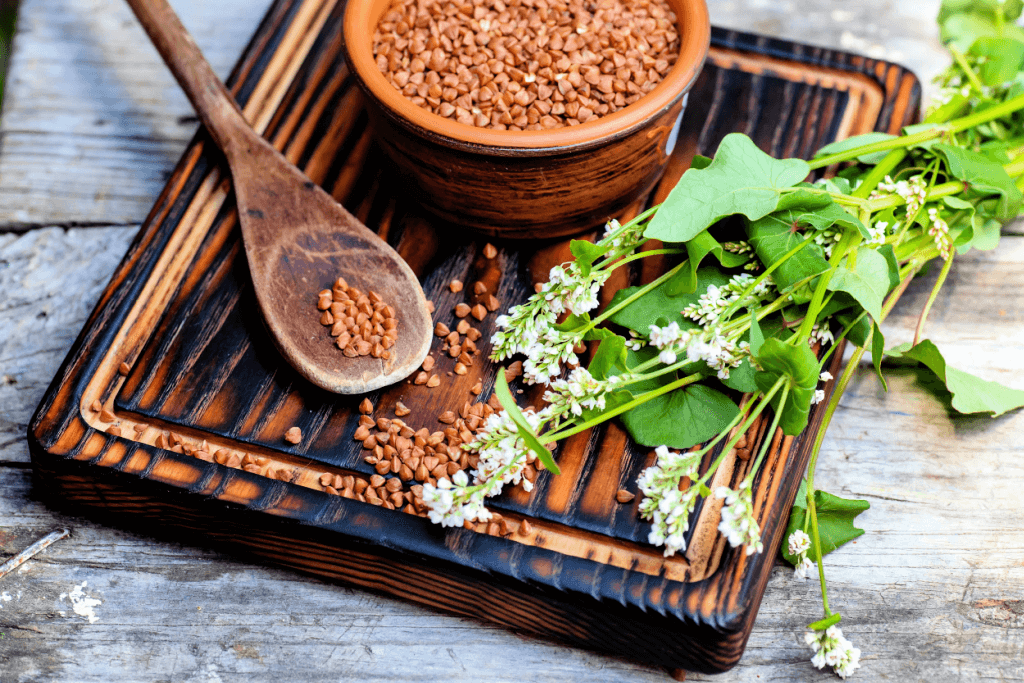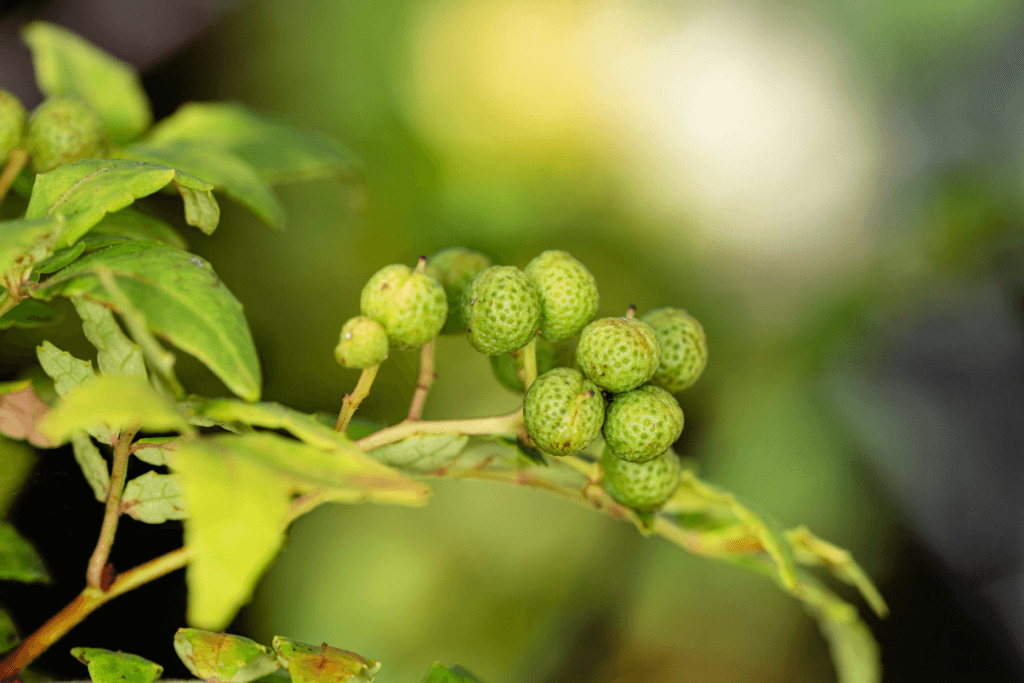Autumn in Japan is a beautiful and captivating time of the year. It happens from September to November when the leaves on the trees change into bright colors like red, orange, and yellow. This change in leaf colors is called “koyo.” It’s a stunning sight, especially in Kyoto. The weather is more relaxed and less humid in autumn, making it perfect for outdoor activities, adventures, and food to enjoy.
Table of Contents
ToggleWhat is autumn like in Japan overall?
If you’re into culture and traditions, autumn in Japan has much to offer. There are unique festivals and events like the “Tsukimi” moon-viewing festival in September. People gather to look at the full moon and enjoy tasty rice dumplings. Other festivals, like the Takayama Autumn Festival and the Jidai Matsuri in Kyoto, give you a taste of Japan’s history and heritage.

Food lovers will enjoy the seasonal dishes featuring Pacific saury, prized matsutake mushrooms, chestnuts, and sweet potatoes. It’s also a great relaxing time in natural hot springs or “onsen,” especially in beautiful places like Hakone and Beppu. If you love the outdoors, you can go hiking and camping in the Japanese Alps and national parks where the weather is just right.
Japan’s temples and shrines are also perfect for finding peace and enjoying the stunning fall foliage. You’ll see decorations with maple leaf designs and chrysanthemum displays in the streets, adding to the festive atmosphere. Autumn in Japan is a paradise for photographers, drawing people worldwide who want to capture the amazing landscapes and beautiful colors. Whether you love nature, culture, tasty food, or all of the above, autumn in Japan offers a diverse and captivating experience, making it an excellent time to explore this unique and enchanting country.
What shrines can I see in Kyoto?
In Kyoto, Japan, known for its rich history and natural beauty, there are three special shrines you should check out. They’re gorgeous in autumn and offer perfect opportunities to view the red leaves. Not to mention, they are excellent examples of traditional Japanese architecture.
Kiyomizu-dera is on top of a hillside and is famous for its wooden stage with fantastic city views. “Kiyomizu-dera” means “Pure Water Temple” because of a waterfall in its serene grounds. The views are breathtaking whether you go in the spring during the cherry blossom season or in the fall when the leaves turn vibrant colors. This place is also a UNESCO World Heritage Site, so it’s a beautiful spot and part of Kyoto’s history.

Tofuku-ji, found in the southern part of Kyoto, is known for its peaceful Zen gardens and quiet atmosphere, perfect for finding peace and relaxation. But the best time to visit is in the fall when the trees in the temple’s valley burst into beautiful colors. It’s a perfect place for leaf-peeping, and the Tsutenkyo Bridge offers a fantastic view of the natural beauty. Beyond its history, Tofuku-ji allows you to connect with the stunning nature of Kyoto.
Lastly, Daigo-ji, in the southeast of Kyoto, is another UNESCO World Heritage Site. It’s a grand place with lovely gardens, impressive architecture, and many cherry blossoms, making it a breathtaking spring sight. Also, the five-story pagoda and the serene Benten Pond add to its charm. Moreover, Daigo-ji invites you to explore a place of culture and natural beauty, perfectly blending Kyoto’s historical heritage and stunning surroundings. These three shrines offer unique and memorable experiences in a city where history and nature come together beautifully.
Are you interested in enjoying snacks inspired by Kyoto’s crimson leaves? Check out Sakuraco! Sakuraco delivers traditional Japanese snacks, teas, sweets, and snacks from local Japanese makers directly to your door so you can enjoy the latest treats directly from Japan!
What kind of food can I enjoy during autumn?
Soba noodles are a popular choice. They are thin buckwheat noodles that taste great and have special meaning. People in Japan eat soba on New Year’s Eve to wish for a long and healthy life. But they’re also enjoyed in the fall, served hot in a tasty broth or cold with a dipping sauce. The nutty flavor of soba goes well with the cool autumn air.
Azuki beans are another treat in the fall. These small red beans are used in lots of sweets and desserts. You can find them in things like dorayaki (red bean pancakes) and taiyaki (pastries shaped like fish and filled with sweet red bean paste). These sweet treats warm you up on chilly autumn days, and the beans’ natural sweetness fits the season.

And then there’s wasanbon – a unique Japanese sugar used to make delicate, artistic sweets. These treats are often part of traditional tea ceremonies or souvenirs. Every season, wasanbon sweets get new shapes and designs. In the autumn, they might look like maple leaves or other symbols of the season. The mild sweetness and the artistic touch make wasanbon sweets unique and a particular part of the flavors of autumn.
Overall, autumn in Japan brings a mix of tasty foods. From comforting soba noodles to sweet treats with azuki beans and the artful wasanbon sweets, these foods let you savor the season’s flavors. However, another unique flavor you can enjoy is sansho pepper!
What is sansho pepper?
Sansho pepper is an intriguing spice often used in Japanese cuisine. It’s not your typical black or white pepper; it comes from the Japanese prickly ash plant and has a unique citrusy, slightly numbing flavor. Sansho pepper is also known for its vibrant green color and is used in ground and whole seed forms.

In Japanese cooking, sansho pepper is appreciated for its ability to add a zesty kick to dishes. It’s often paired with foods like eel, tempura, and grilled meats, which contribute a distinctive, refreshing flavor. Additionally, sansho pepper is a crucial ingredient in some traditional dishes, such as “unagi” (grilled eel) and “soba” (buckwheat noodles).
This spice offers a tantalizing taste and boasts potential health benefits, such as aiding digestion and promoting circulation. Sansho pepper adds a unique and memorable twist to Japanese cuisine, making it a must-try for those seeking exciting new flavors.
How can I enjoy the red leaves in Kyoto?
Overall, to savor the breathtaking red leaves in Kyoto, explore the city’s renowned shrines like Kiyomizu-dera, Tofuku-ji, and Daigo-ji, each offering exquisite foliage displays during autumn. Stroll through the enchanting Arashiyama Bamboo Grove and the vibrant Philosopher’s Path.
You can also embark on a boat ride along the Hozugawa River, surrounded by nature’s fiery hues. Remember to savor seasonal delights like soba noodles, azuki bean sweets, and artful wasanbon treats. The symphony of flavors and sights in Kyoto’s splendid red leaves will create lasting memories of Japan’s unique and captivating season. Would you ever visit Kyoto in the fall? Let us know in the comments below.











